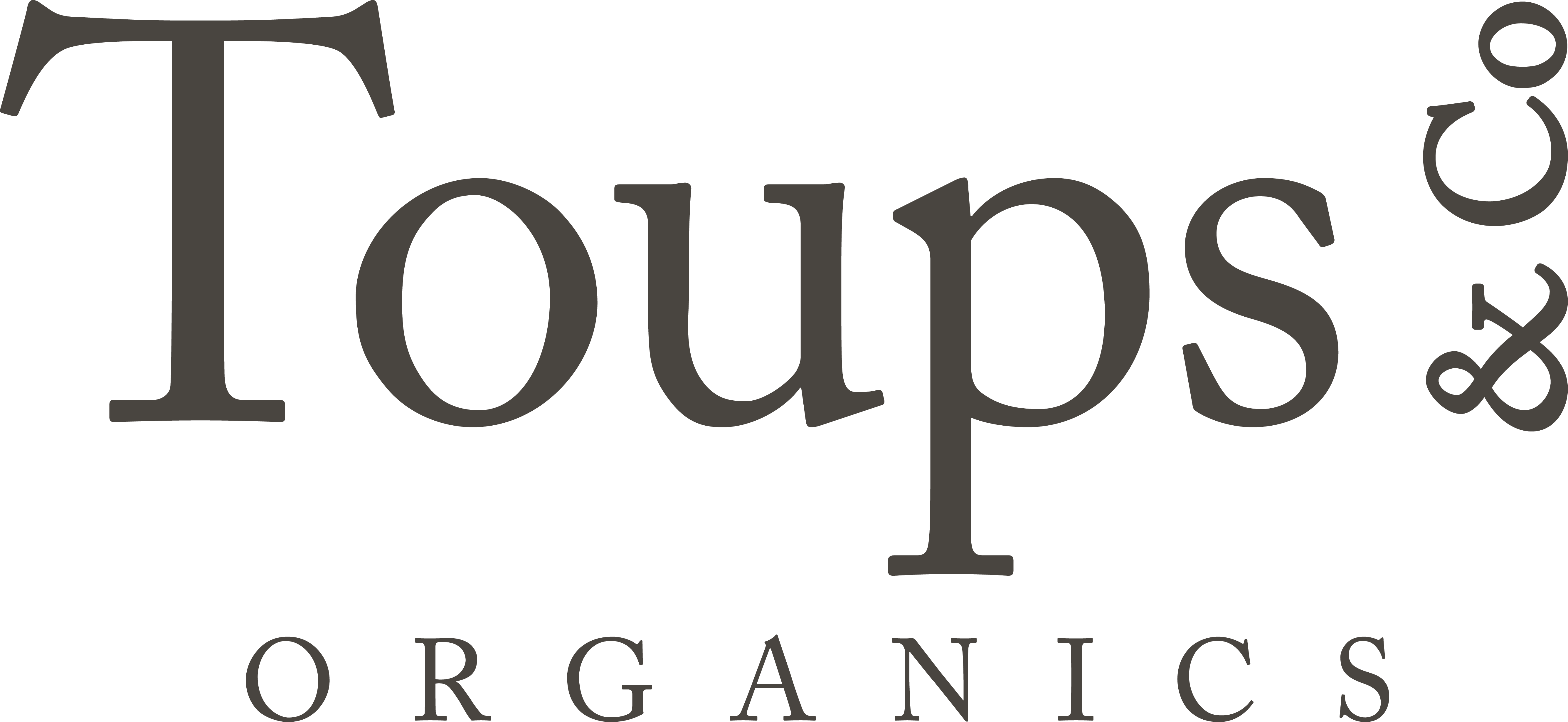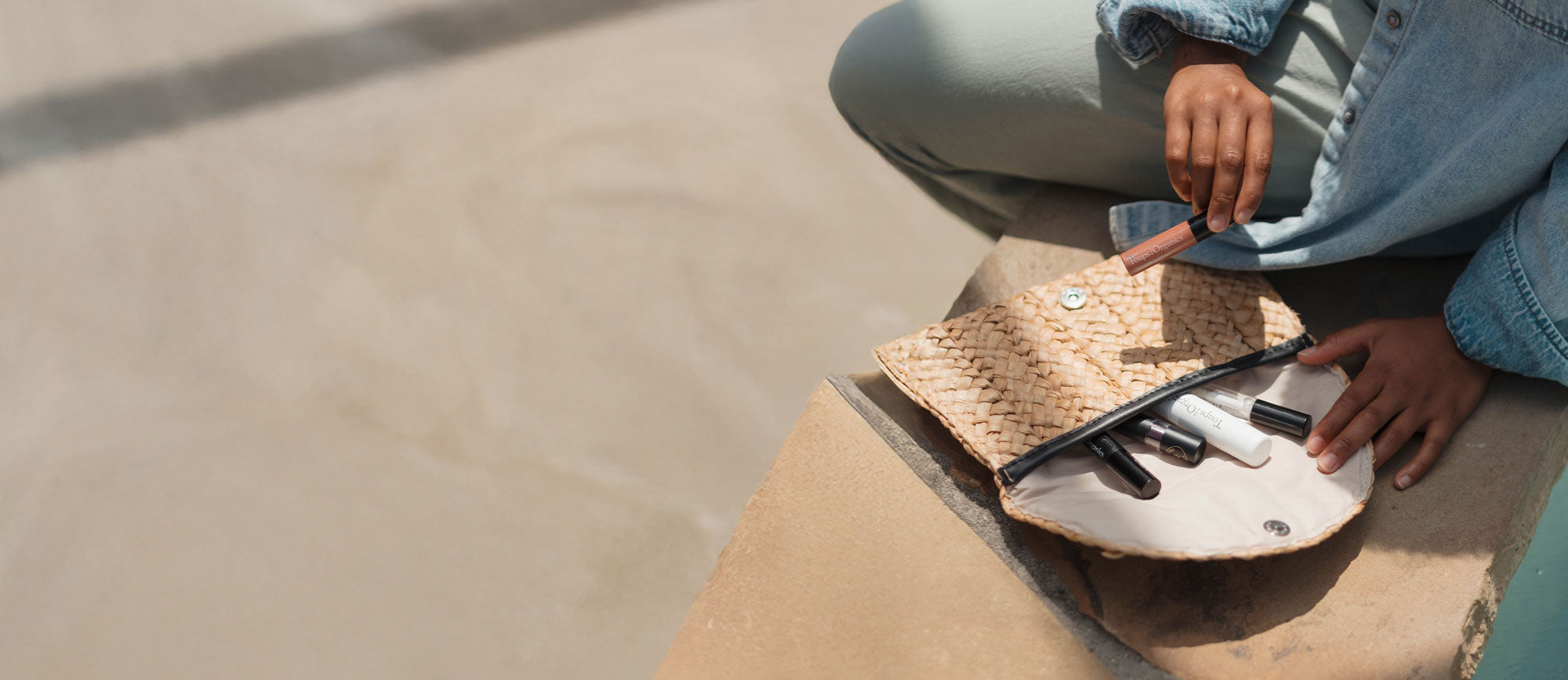As your student returns to high school or college, they’re faced with a lot of big questions, including which beauty products to use. Here’s how they can recognize synthetic chemicals in their products, and hormone-friendly swaps to use instead.
When back-to-school season hits, lip plumping gloss, aluminum deodorant, and glitter body sprays tend to steal the spotlight. But what if we could swap these popular products for clean alternatives? High school and college are vulnerable times, when students' hormones are still balancing. They need access to clean beauty and hygiene products that protect their health, so they can focus on academics and community.
Which Chemicals Should You Avoid in Back-to-School Beauty and Hygiene Products?
Beauty products that are filled with chemicals and synthetics just aren’t the best thing to nourish our skin. The top chemicals to avoid are hormone disruptors, plastics, fragrance, benzene, and formaldehyde.
Hormone (or endocrine) disruptors
Chemicals that disrupt the endocrine system have been linked to infertility and reproductive harm. Your student’s hormones are still balancing out, and they’re under a lot of emotional pressure in both high school and college. They need easy access to effective products that will protect their hormones while they’re away from home.
The most common hormone disruptors are parabens, phthalates, and PFAS (or forever chemicals), and they’re found in many everyday products, from shampoo to mascara.
What You’ll See on the Label:
- Parabens — propylparaben, methylparaben, butylparaben, etc.
- Phthalates — dibutylphthalate, diethylphthalate, fragrance, etc.
- PFAS — ingredients with “perfluoro,” like perfluorononyl dimethicone
Plastics and microplastics
There are so many different types of plastics that could be in your student’s personal care products. Microplastics and nanoplastics (which are microscopic plastics) are all used to formulate makeup and skincare products. In fact, it’s estimated that 90% of cosmetics contain plastic, which pollutes our hormones, skin, and the environment.
Using plastic-free beauty products is not only a win for the environment but is also genuinely so much better for your student’s skin. Barrier disruption during high school and college is common, and nourishing oils, herbs, and animal-based ingredients yield safe and effective results.
What You’ll See on the Label:
- The word polymer or poly usually indicates plastic. Also look for dimethicone, nylon, and butylene.
Fragrance (or parfum)
Fragrance is a “catch-all” label that could include up to 3,000 different chemicals. Manufacturers do not need to disclose exactly what’s in their fragrance, since it’s considered a trade secret. This is okay in theory, but many clean beauty brands hide hormone disruptors and questionable chemicals in this label. Fragrance is also one of the biggest triggers for eczema and skin sensitivity.
What You’ll See on the Label:
- Fragrance or parfum. We never recommend buying a product with fragrance, but if you do, make sure it’s the last item on the label. If not, it’s likely hiding parabens, phthalates, and other chemicals.
Benzene
This is a known carcinogen and a component of crude oil. While benzene is technically FDA-regulated, beauty products aren’t subject to FDA approval. This means benzene contamination is common, as we’ve seen with sunscreen and skincare in recent years.
When it comes to benzene in personal care products, the goal isn’t simply to avoid this carcinogen. We encourage consumers to avoid brands that use these ingredients altogether, because they don’t have your wellness in mind.
What You’ll See on the Label:
- You won’t find benzene on a product label, since it’s technically not allowed in the United States. We recommend you ask clean beauty brands to do regular contamination testing and avoid brands that have benzene-related lawsuits.
Formaldehyde releasers
Formaldehyde is another human carcinogen. The FDA doesn’t recommend using it in beauty products, but the ingredient itself is unregulated. To avoid listing formaldehyde on a product label, brands often use “formaldehyde releasers” in cosmetics. These are chemical preservatives that release formaldehyde into a product over time.
Our skin is our largest organ. And it’s delicate, so it’s not meant for harsh, formaldehyde-releasing preservatives. Often, the right combination of herbs and essential oils can keep a product from going bad and provide benefits to the skin, too.
What You’ll See on the Label:
- Chemical preservatives like DMDM hydantoin, quaternium-15, and glyoxal.
Nourish Well With These Natural Alternatives
Nature knows best. These are time-tested ingredients to use in place of chemical and synthetic additives. Many of these ingredients are gaining ground in the holistic community and reestablishing their good reputation. For many, they work better than chemical alternatives.
Oils for the body
From ancient Turkey to ancient Greece, oils have been used for thousands of years as the preferred moisturizer. These nature-made formulas don’t need added fatty acids, minerals, antioxidants, or vitamins because they already have them. Ideally, we want to use a product from nature and manufacture it as little as possible. The more natural the product is, the easier it is for our skin to absorb. Body oils, facial cleansing oils, and oil-based serums are a beautiful example of just how effective and beneficial a single ingredient can be without alteration.
Tallow and animal-based skincare
Animal fats were one of the most prized resources in the ancient world, and not just for their nutritional benefits. From the ancient Egyptian era to just a few hundred years ago during American pioneer history, soaps were made from animal fats and ash. These fats contain a unique chemical composition that’s almost bioidentical to human sebum, which makes them the ideal remedy for skin healing.
Essential oils
Highly concentrated plants and herbs have also been around for centuries, with many unique uses. Today, they can improve our skin barrier and support a healthy skin microbiome. Some of our favorites, like frankincense, lavender, and bergamot, add a gentle (and all-natural) scent to skincare while benefiting the brain, nervous system, and mood. Depending on your skincare formulation, essential oils may also be used as all-natural preservatives, replacing those cheap manufactured options, like formaldehyde.
Raw honey
One of the best natural remedies for acne and skin barrier disruption is raw honey. Since honey is naturally antibacterial and anti-inflammatory, it can help restore the microbiome and cleanse the skin of the unhealthy bacteria that lead to breakouts. Cleopatra is said to have used raw honey for her beauty routine, and it’s still a popular choice today. The best honey is raw honey, since the nutrients aren’t filtered out.
Clay and activated charcoal
If you’ve used chemical skincare products for a long time, you may experience a bit of purging when you switch to a clean beauty brand. This happens when your skin reacts to the change in routine and tries to push out chemicals. And don’t worry, it’s temporary and usually only lasts about 2–3 weeks. That said, sometimes you can help your skin purge quicker with a natural remedy that pulls out toxins and dirt. Activated charcoal, kaolin clay, and Australian pink clay are all great remedies for this, and they can soften the skin with gentle exfoliation, too.
Going Back to School Doesn’t Have to Mean Going Back to Chemicals
Your student’s high school and college years are some of the most important for their brain and hormone development. While food and lifestyle are essential for nourishing their minds, it’s also important to give students a head start by avoiding chemical products. Swapping out chemical-filled personal care products is a small change but can make a big difference in fighting hormone disruption, brain fog, and long-term autoimmune issues. Plus, it starts your student off with a wellness mindset that they’ll appreciate in years to come.

